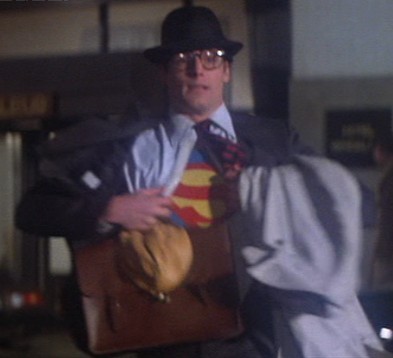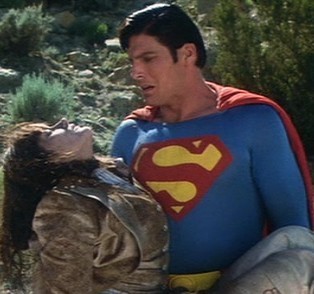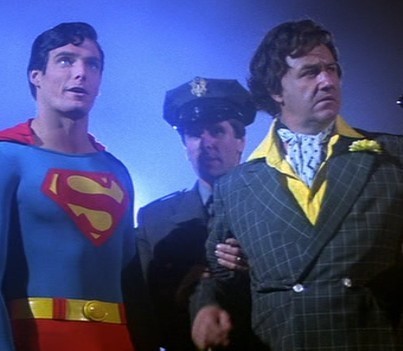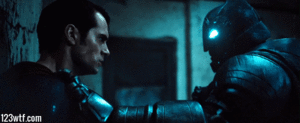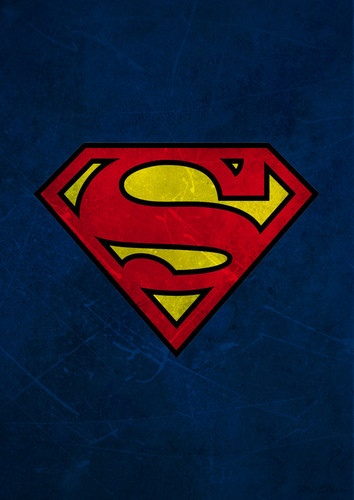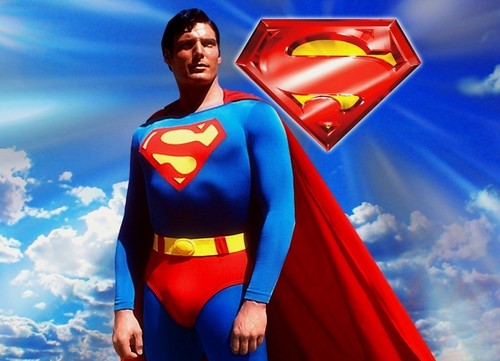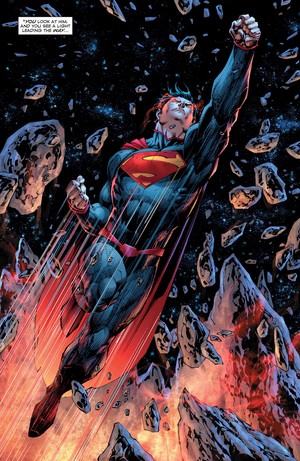Below is an essay I had to write for a college Film Genre Class:
In 1978, when Christopher Reeves flew on to the silver screen as the Last Son of Krypton, the superhero film genre was born. The film Superman: The Movie would go on to establish the narrative structure that is still used in the superhero films made today. Budgeted in 1977 at $55 million, it would set many precedents for the popcorn blockbuster, “not the least of which was the idea of hiring big stars in action genres that previously were made under mostly B-picture budgets” (McAllister, 110).
The first and most important thing of the narrative structure in superhero films is of course, the origin story. The Man of Steel’s origin reflects many of the same themes as some biblical stories. But the closest of the stories that it resembles is the story of Moses, who was sent down a river by his mother when a Pharaoh ordered all newborn Hebrew boys to be killed, and ended up being adopted into the Egyptian royal family. He was later commanded by God to deliver the Hebrews from slavery. This closely resembles the origin story of Kal-El a.k.a Clark Kent in the way that he was sent to Earth in a spaceship just before his home planet of Krypton was to blow up. When he arrives on Earth he is found and raised by Jonathan and Martha Kent. Shortly after the death of his father Jonathan, Clark hears the green crystal from his ship making a peculiar sound only he can hear, and is drawn to find it. He realizes that it is time to discover his purpose on Earth and bids farewell to his mother. He departs on a journey to the Arctic and uses the crystal to build the Fortress of Solitude, a majestic crystal palace in the architectural style of his home planet. It is here that the disembodied “memory” of his biological father Jor-El speaks to him and tells him of his ultimate destiny on Earth.
This narrative device of losing someone close to the hero tends to be used quite often, because it is the quintessential point in the hero’s life to start the journey down the road of righteousness. Because they have now not only gone through a physical change in themselves but they are now transformed internally as well. This would then lead into one of the major icons of the superhero film genre, the costume. The costume the hero dons is not only to protect their secret identity (which is itself an icon as well) but also to be seen not just as a person but also as a symbol for good.
Pretty early on in the film we are introduced to all the key characters. Theses include the hero who we have already met, the object of his/her affection who they can never be with, and the villain of the story. When we meet the villain for the first time their plan to commit the ultimate crime is already well underway.
When Clark is about to turn into Superman for the first time in the film the non-diegetic music starting to build up let’s us know that our hero is ready to save the day. Often each hero in a film tends to have a theme, ironically much like the killer in horror films.
This is also the first time in the film were we physically see the change from the secret identity to the hero, which is usually shown (as made famous by the Superman film) by the ripping open of the shirt and reveling the symbol underneath. The character typology of Superman in Superman is that he can almost be seen as a Christ figure, one example is that of when Jor-El says “I send them my only son…’ It was God sending Christ to Earth.” (Kozlovic, 2002)
In these films the woman that the hero is in love with is very close to them, but the woman doesn’t really ever acknowledge the hero’s presence. By contrast when the hero is in costume this same person is head over heels for them. In Superman, Lois Lane has no attraction whatsoever to Clark Kent and often even forgets he’s there. But when she is in the presence of Superman she is often not herself and stumbles over her words. The hero’s love for the woman is also so great that they are willing to give their life or do anything superhumanly possible to save them from death. Again in Superman after Lois dies in an earthquake caused by Lex Luthor’s missiles, Superman leaves Earth’s atmosphere and circles the Earth to turn back time and save Lois’ life. The hero often loves this woman because they are strong and independent. They can always handle themselves in a situation and usually try getting themselves out of a situation, but in the end always end up needing to be saved by the hero.
This brings us to the hero’s nemesis and arch villain of the story. In the case of Superman it is super criminal mastermind Lex Luthor. As with any villain Lex has a plan that will ultimately affect the world. In the film his plan is to commit as he puts it “the greatest real-estate swindle of all time.” To do this he plans to cause a major earthquake in California using two U.S. missiles, reprogramming one of them to hit the San Andreas Fault and other missile being used as a diversion is targeted on Hackensack, New Jersey. The quake will cause all of California to slide into the ocean, making the huge amount of desert land that Luthor has quietly purchased skyrocket in value as it becomes the new west coast.
The climax of the film ultimately happens when the hero and the villain meet for a final confrontation, and this is what exemplifies the superhero film genre. In Superman, it is the day of test missile launch, Lois is in California investigating the large amount of land being bought, and a “worthless piece of meteorite” has been stolen (actually Kryptonite, Superman’s only weakness) from a museum. All this is setting up the events to come in the confrontation of Superman and Lex. Lex lures Superman to his lair by the threat of a poisonous gas pellet that will decimate the population of Metropolis.
All superhero films have this final confrontation where the hero is lured to the arch villain’s lair or hideout by the threat of harm to the city of some kind, and the two will fight (either intellectually or physically), with the superhero eventually winning.
In Superman, Lex feels the need to some how try and force Superman into a situation where has to choose who to save. This is the monologue; it will come back after the villain leaves the hero for dead and it is what gives the superhero all the information he will need to stop them after they escape death.
Lex has manipulated Kal-El into coming to his lair, opening a lead chest that holds Kryptonite, and will leave Superman for dead. (“Mind over muscle Superman” – Lex Luthor). This shows that formula for the superhero film genre to a tee. This is the genre film for a superhero movie, because “it is an actual event that honors a contract” to the film genre which “exists as a sort of ‘contract’ between filmmakers and audience” (Schataz, 691)
And though it is sometimes tough to distinguish whether or not the superhero film belongs within science fiction or fantasy (Neale, Genre and Hollywood) it is safe to say the superhero film relies hugely on both.
“They can be a great people, Kal-El, they wish to be. They only lack the light to show the way. For this reason above all, their capacity for good, I have sent them you... my only son.”
Works Cited:
McAllister, Matt “Blockbuster Meets Superhero Comic, or Art House Meet Graphic Novel” Journal of Popular Film and Television 34 no3 Fall 2006: Pg. 110
Schataz, Thomas “Film Genre and the Genre Film”
From Hollywood Genres 1991: Pg.691
Neale, Steve “Horror and Science Fiction”
Genre and Hollywood
Kozlovic, Anton Karl “Superman as Christ-Figure: The American Pop Culture Movie Messiah” Journal of Religion and Film Vol. 6 No.1 April 2002
In 1978, when Christopher Reeves flew on to the silver screen as the Last Son of Krypton, the superhero film genre was born. The film Superman: The Movie would go on to establish the narrative structure that is still used in the superhero films made today. Budgeted in 1977 at $55 million, it would set many precedents for the popcorn blockbuster, “not the least of which was the idea of hiring big stars in action genres that previously were made under mostly B-picture budgets” (McAllister, 110).
The first and most important thing of the narrative structure in superhero films is of course, the origin story. The Man of Steel’s origin reflects many of the same themes as some biblical stories. But the closest of the stories that it resembles is the story of Moses, who was sent down a river by his mother when a Pharaoh ordered all newborn Hebrew boys to be killed, and ended up being adopted into the Egyptian royal family. He was later commanded by God to deliver the Hebrews from slavery. This closely resembles the origin story of Kal-El a.k.a Clark Kent in the way that he was sent to Earth in a spaceship just before his home planet of Krypton was to blow up. When he arrives on Earth he is found and raised by Jonathan and Martha Kent. Shortly after the death of his father Jonathan, Clark hears the green crystal from his ship making a peculiar sound only he can hear, and is drawn to find it. He realizes that it is time to discover his purpose on Earth and bids farewell to his mother. He departs on a journey to the Arctic and uses the crystal to build the Fortress of Solitude, a majestic crystal palace in the architectural style of his home planet. It is here that the disembodied “memory” of his biological father Jor-El speaks to him and tells him of his ultimate destiny on Earth.
This narrative device of losing someone close to the hero tends to be used quite often, because it is the quintessential point in the hero’s life to start the journey down the road of righteousness. Because they have now not only gone through a physical change in themselves but they are now transformed internally as well. This would then lead into one of the major icons of the superhero film genre, the costume. The costume the hero dons is not only to protect their secret identity (which is itself an icon as well) but also to be seen not just as a person but also as a symbol for good.
Pretty early on in the film we are introduced to all the key characters. Theses include the hero who we have already met, the object of his/her affection who they can never be with, and the villain of the story. When we meet the villain for the first time their plan to commit the ultimate crime is already well underway.
When Clark is about to turn into Superman for the first time in the film the non-diegetic music starting to build up let’s us know that our hero is ready to save the day. Often each hero in a film tends to have a theme, ironically much like the killer in horror films.
This is also the first time in the film were we physically see the change from the secret identity to the hero, which is usually shown (as made famous by the Superman film) by the ripping open of the shirt and reveling the symbol underneath. The character typology of Superman in Superman is that he can almost be seen as a Christ figure, one example is that of when Jor-El says “I send them my only son…’ It was God sending Christ to Earth.” (Kozlovic, 2002)
In these films the woman that the hero is in love with is very close to them, but the woman doesn’t really ever acknowledge the hero’s presence. By contrast when the hero is in costume this same person is head over heels for them. In Superman, Lois Lane has no attraction whatsoever to Clark Kent and often even forgets he’s there. But when she is in the presence of Superman she is often not herself and stumbles over her words. The hero’s love for the woman is also so great that they are willing to give their life or do anything superhumanly possible to save them from death. Again in Superman after Lois dies in an earthquake caused by Lex Luthor’s missiles, Superman leaves Earth’s atmosphere and circles the Earth to turn back time and save Lois’ life. The hero often loves this woman because they are strong and independent. They can always handle themselves in a situation and usually try getting themselves out of a situation, but in the end always end up needing to be saved by the hero.
This brings us to the hero’s nemesis and arch villain of the story. In the case of Superman it is super criminal mastermind Lex Luthor. As with any villain Lex has a plan that will ultimately affect the world. In the film his plan is to commit as he puts it “the greatest real-estate swindle of all time.” To do this he plans to cause a major earthquake in California using two U.S. missiles, reprogramming one of them to hit the San Andreas Fault and other missile being used as a diversion is targeted on Hackensack, New Jersey. The quake will cause all of California to slide into the ocean, making the huge amount of desert land that Luthor has quietly purchased skyrocket in value as it becomes the new west coast.
The climax of the film ultimately happens when the hero and the villain meet for a final confrontation, and this is what exemplifies the superhero film genre. In Superman, it is the day of test missile launch, Lois is in California investigating the large amount of land being bought, and a “worthless piece of meteorite” has been stolen (actually Kryptonite, Superman’s only weakness) from a museum. All this is setting up the events to come in the confrontation of Superman and Lex. Lex lures Superman to his lair by the threat of a poisonous gas pellet that will decimate the population of Metropolis.
All superhero films have this final confrontation where the hero is lured to the arch villain’s lair or hideout by the threat of harm to the city of some kind, and the two will fight (either intellectually or physically), with the superhero eventually winning.
In Superman, Lex feels the need to some how try and force Superman into a situation where has to choose who to save. This is the monologue; it will come back after the villain leaves the hero for dead and it is what gives the superhero all the information he will need to stop them after they escape death.
Lex has manipulated Kal-El into coming to his lair, opening a lead chest that holds Kryptonite, and will leave Superman for dead. (“Mind over muscle Superman” – Lex Luthor). This shows that formula for the superhero film genre to a tee. This is the genre film for a superhero movie, because “it is an actual event that honors a contract” to the film genre which “exists as a sort of ‘contract’ between filmmakers and audience” (Schataz, 691)
And though it is sometimes tough to distinguish whether or not the superhero film belongs within science fiction or fantasy (Neale, Genre and Hollywood) it is safe to say the superhero film relies hugely on both.
“They can be a great people, Kal-El, they wish to be. They only lack the light to show the way. For this reason above all, their capacity for good, I have sent them you... my only son.”
Works Cited:
McAllister, Matt “Blockbuster Meets Superhero Comic, or Art House Meet Graphic Novel” Journal of Popular Film and Television 34 no3 Fall 2006: Pg. 110
Schataz, Thomas “Film Genre and the Genre Film”
From Hollywood Genres 1991: Pg.691
Neale, Steve “Horror and Science Fiction”
Genre and Hollywood
Kozlovic, Anton Karl “Superman as Christ-Figure: The American Pop Culture Movie Messiah” Journal of Religion and Film Vol. 6 No.1 April 2002



